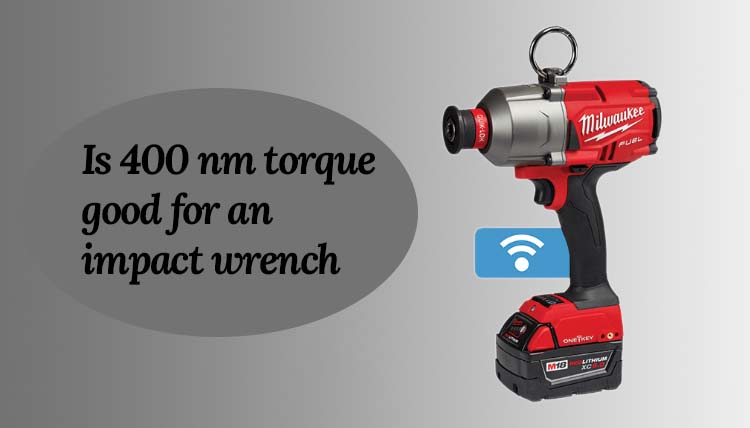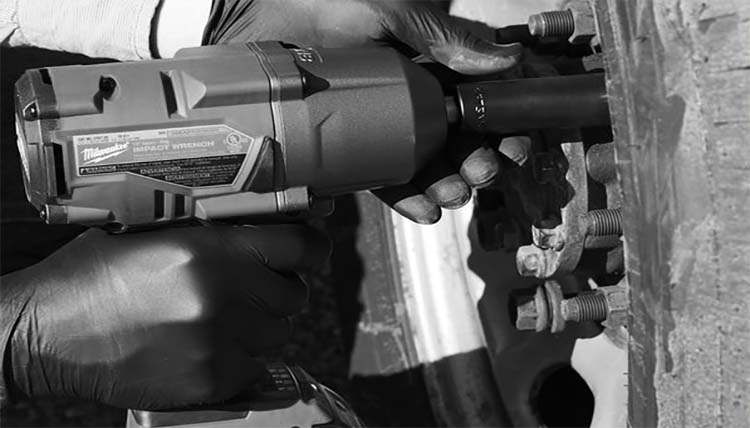In the mechanical realm, mastering the art of tool selection is key. While impact wrenches are powerful allies in many tasks, there are moments when finesse prevails over force. Join us on a journey to explore the intricacies of “When Not to Use an Impact Wrench.”
Discover the delicate tasks, tight spaces, and sensitive materials that call for a more nuanced touch. Let’s unravel the scenarios where precision, manual control, and thoughtful consideration lead to optimal outcomes.

When Not to Use an Impact Wrench – 6 Situations You Must Avoid
1. Precision Tasks
When accuracy is paramount, specific tasks demand a meticulous touch. Precision tasks, often involving intricate machinery or delicate components, require a controlled application of force. From assembling electronics to fine-tuning intricate structures, the emphasis lies on exactitude. An impact wrench’s brute force may prove counterproductive in such scenarios. So, If you need to make a precise measurement or require a high level of accuracy, it is best to avoid using it.
2. Delicate Materials
While an impact wrench excels in heavy-duty applications, its limitations become apparent when dealing with fragile materials. Delicate fastening (such as woodworking or assembling sensitive instruments) necessitates a gentler approach. The sheer power of an impact wrench can lead to over-tightening or damage, making it unsuitable for tasks demanding finesse. So, if you are working with fragile and soft material, it can easily crush and break.
3. On small fasteners or bolts
Impact wrenches are typically best suited for larger bolts and fasteners. Using an impact wrench on small fasteners can lead to over-tightening or damage to the fastener.
4. Challenges in Confined Areas
Navigating tight spaces presents a unique set of challenges, demanding adaptable tools. The right tool choice becomes crucial in scenarios where physical constraints complicate maneuverability. Precision and control are paramount in confined areas, where each movement counts.
While impact wrenches excel in power and speed, their effectiveness diminishes in tight spaces. Bulky and less maneuverable, these tools struggle to reach inaccessible corners. Attempting to force them into confined areas may compromise efficiency and lead to potential damage.
So, when working in a too-tight space, you must ensure these things-
- Must be well-trained to operate it
- Use proper equipment
- Ensure a suitable working environment
- Follow proper safety procedure
5. Situations with Low Torque Needs:
Certain tasks demand a nuanced understanding of torque requirements. Recognizing scenarios with low torque needs is crucial for optimal tool selection. In applications where excessive force can be detrimental, opting for a tool that allows precise torque adjustment becomes imperative.
Manual control is advantageous in applications requiring adjustable torque. It allows for a more tactile approach, ensuring that the force applied aligns with the specific needs of the task. This control level becomes particularly beneficial when a delicate touch is essential.
6. When Working on Vehicle Interiors:
Navigating automotive interiors requires precision and care to avoid damage. Special considerations, such as delicate trims and electronic components, highlight the need for tools that can work seamlessly without causing harm to the interior features.
The powerful torque generated can harm delicate materials in automotive interiors, risking scratches, cracks, or other damage. Knowing when to opt for alternative tools in such situations is crucial.
See Also: Corded vs Cordless Impact Wrench – Which is Right for You
Alternatives to using an impact wrench in these situations
Precision Tasks and Fragile Materials:
Use a torque wrench for precise control over-tightening. Hand tools like screwdrivers or ratchets provide the finesse needed for delicate materials.
Tight Spaces and Limited Accessibility:
Embrace compact hand tools such as a ratcheting wrench or a manual ratchet with various attachments for better maneuverability in tight spaces.
Low Torque Requirements and Adjustable Torque Needs:
Opt for a manual torque wrench that allows you to adjust torque settings according to the specific requirements of the task.
Thread Preservation and Preventing Over-Tightening:
Employ a hand ratchet or torque wrench to carefully control the tightening process and prevent the risk of over-tightening, preserving thread integrity.
Sensitive Assemblies and Delicate Fastening:
Choose hand tools like a manual or precision torque screwdriver to ensure a gentle and controlled approach in sensitive assemblies.
Automotive Interiors and Non-Metallic Surfaces:
Utilize hand tools such as a manual ratchet or a torque wrench with adjustable settings to prevent damage to non-metallic surfaces in automotive interiors.
8 Common Mistakes to Avoid When Using an Impact Wrench
1. Neglecting Workspace Preparation
Mistake: Starting work without ensuring a safe environment.
Impact: Sparks from the wrench can ignite flammable materials nearby.
Solution: Clear the workspace of flammable substances before using the impact wrench.
2. Failure to Check Tightening
Mistake: Neglecting to check the wrench’s tightening and torque.
Impact: Risk of damaging workpieces or causing personal injury.
Solution: Always double-check tightening and torque before using the impact wrench.
3. Incorrect Size Usage
Mistake: Using the wrong size impact wrench.
Impact: This can result in stripped bolts, material damage, or over-tightening.
Solution: To avoid potential issues, select the appropriate size for the specific job.
4. Using Non-Impact Rated Sockets
Mistake: Use standard sockets instead of impact-rated ones.
Impact: Increased risk of socket breakage or stripping.
Solution: Utilize impact-rated sockets to withstand the forces generated by the wrench.
5. Improper Power Source Connection
Mistake: Incorrectly connected to the power source.
Impact: Risks electrocution, fire hazard, and tool damage.
Solution: Ensure proper grounding, correct socket size, and secure power connection.
6. Neglecting Torque Settings
Mistake: Using the impact wrench without setting the proper torque.
Impact: The risk of under-tightening or over-tightening bolts leads to breakage or failure.
Solution: Be aware of the correct torque settings for each application and follow the manufacturer’s instructions.
7. Working Without Safety Gear
Mistake: Operating the impact wrench without proper safety gear.
Impact: Increased risk of injuries from flying debris or eye damage.
Solution: Wear gloves, safety glasses, and other necessary protective equipment to ensure personal safety and protect work surfaces.
8. Failure to Unplug After Use
Mistake: Leaving the impact wrench plugged in after completing the task.
Impact: Motor overheating, potential damage, and reduced tool efficiency.
Solution: Always unplug the impact wrench after use, allowing it to cool down before storing it properly for longevity and optimal performance.
FAQS
How do I prevent over-tightening and preserve threads when using an impact wrench?
To prevent over-tightening and preserve threads with an impact wrench, use a torque wrench for precise control. Carefully adjust torque settings to match the task’s requirements, ensuring optimal thread integrity and preventing damage to both the workpiece and the tool.
Is it necessary to check the torque settings before using an impact wrench?
Yes, checking torque settings before using an impact wrench is crucial. It ensures proper force for the application, preventing under-tightening or over-tightening that could lead to breakage or failure. Prioritizing this step safeguards your workpieces and promotes safe, efficient tool usage.
What are the potential risks of using the wrong size impact wrench, and how can I avoid them?
Using the wrong size impact wrench poses risks such as stripped bolts or material damage. To avoid these issues, always select the appropriate size for your task. Choosing the right size ensures efficient operation and prevents potential damage to both the tool and the work surface.
Conclusion
So, understanding when not to use an impact wrench is paramount for safe and efficient work. From delicate tasks requiring finesse to confined spaces where adaptability is key, recognizing these scenarios ensures optimal tool selection. By embracing alternatives, checking torque, and prioritizing safety measures, you preserve your work’s integrity and enhance the longevity and effectiveness of your tools. Always approach your projects carefully, considering each task’s specific demands.
You may also like:



